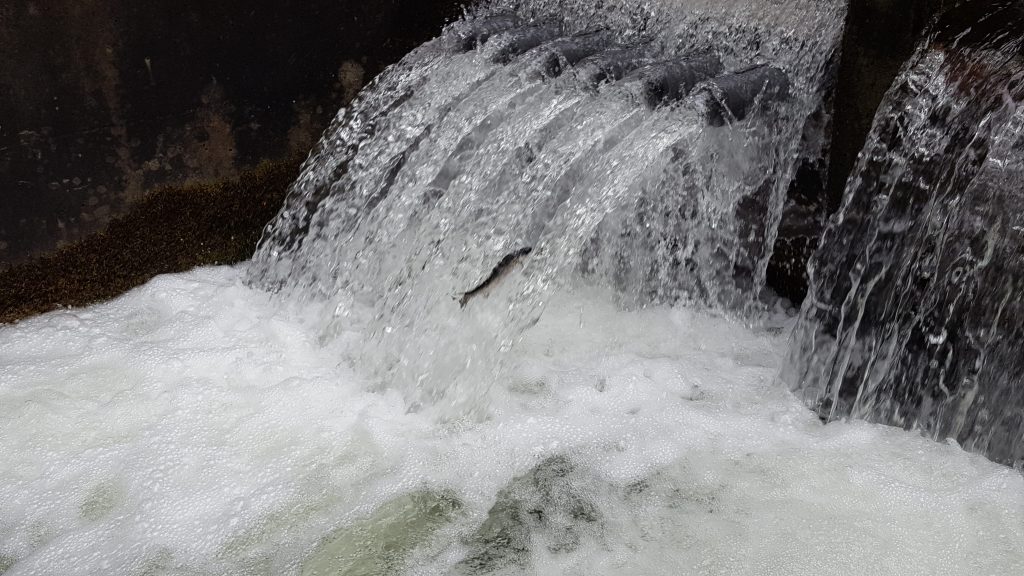
Most Smolts From New Strain Of Skykomish Summer Steelhead Have Left Rearing Ponds
Nearly 95 percent of a new strain of local, natural-origin summer-run steelhead smolts have now left their rearing ponds on the Skykomish River and are heading to Puget Sound, according to state fishery managers.
WDFW reports that as of this morning, 53,191 of the 56,000 South Forks allowed to be released by federal overseers have been counted exiting Reiter Ponds since the gates there were opened April 23.

These steelhead represent the future of the popular fishery as production of out-of-basin Skamania summer-runs will end after next year. So far this spring a total of 51,356 Skamania smolts have also left the state facility east of Gold Bar.
The two strains will provide for consumptive fisheries on the Skykomish when they begin returning as adults in summer 2023. This year’s fishing season begins May 29, the Saturday before Memorial Day.
A total of 60,000 Skamanias can be let loose this year and 40,000 in 2022, while South Fork releases ramp up to 76,000 next year and level out at 116,000 in 2023 and beyond.
Skamanias are being phased out following 2017’s federal direction to find an “alternative stock” to the one originally from Southwest Washington, as well as a 2019 WDFW-Wild Fish Conservancy court settlement that cemented the move to an integrated broodstock.
South Forks are a naturalized intermixture of hatchery Skamanias and wild summer-runs that since 1958 have been captured in a fish trap at the base of 105-foot-high Sunset Falls on the South Fork Skykomish River and trucked upstream to utilize spawning and rearing habitat there.
WFC sued in February to stop this spring’s smolt release of South Forks, claiming WDFW had violated the Endangered Species Act by collecting and holding their parents, but in March a federal judge agreed to a “stay” of the lawsuit, suspending the court case until WDFW had permission to let the fish go from the National Marine Fisheries Service.
That came late last month when NMFS indicated that it didn’t have a biological concern with releasing the new strain into the Sky as the agency continues working through the hatchery genetic management plan submitted by WDFW and the Tulalip Tribes.
As of last Tuesday morning, May 4, just 13,384 South Fork smolts had left Reiter. The fish are a key part of WDFW’s broadly supported Quicksilver Portfolio, which aims to provide a diversity of steelhead angling options across Pugetropolis – from consumptive to catch and release – while protecting and rebuilding struggling runs, and it scored nearly $1.7 million in the recently passed state budget.


